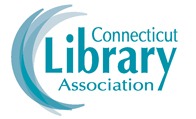Dr. Edison Liu, Jackson Lab’s president and chief executive officer, will speak at the Health Center commencement exercises, May 13 at the Connecticut Convention Center in Hartford.
Liu, who has been president of the international group the Human Genome Organisation since 2007, joined Jackson Labs (JAX) in Maine from the Genome Institute of Singapore. As founding executive director, he built the GIS from a staff of three into a major research institute of 27 laboratory groups and a staff of 270, with faculty in functional genomics, computational biology, population genetics and genome-to-systems biology. Before moving to Singapore in 2001, he was the scientific director of the National Cancer Institute’s Division of Clinical Sciences in Bethesda, Md.
Update on the Jackson Labs - UConn plans, from the JAX website:
JAX Genomic Medicine will be built on a 17-acre site on the University of Connecticut Health Center campus in Farmington. Initial operations will begin in 2012 using leased space while a 173,000-square-foot permanent facility is designed and built. Construction will begin in 2013, and the new facility will open in 2014. It will house 300 biomedical researchers, technicians and support staff in state-of-the-art computing facilities and laboratories.
The JAX Genomic Medicine facility is an expansion, not a relocation, of The Jackson Laboratory. JAX will continue to grow its basic research campus in Bar Harbor, Maine, while the new facility in Connecticut focuses on medical applications of genomics with academic and clinical research partners from Connecticut and around the world.

 .
.

































